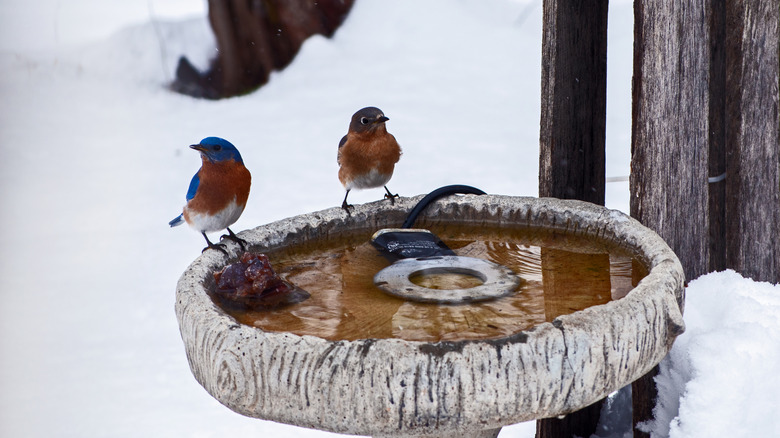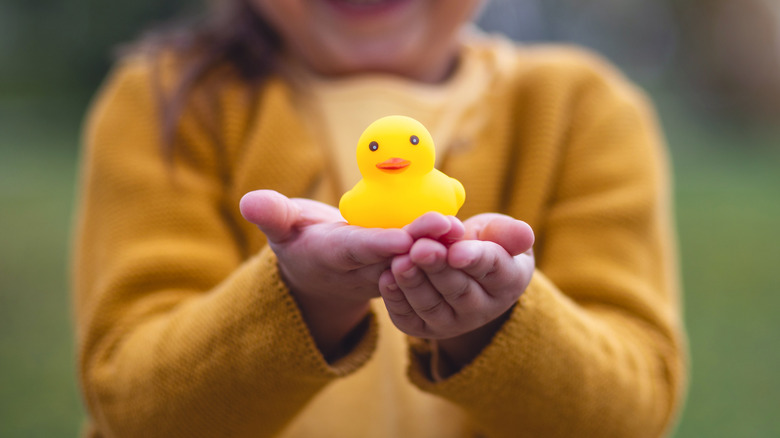The Unexpected Way To Prevent Your Bird Bath From Freezing In Winter (It's So Affordable)
As the leaves fall to the sidewalk, pushed along by the cold wind, you will notice crystals of ice on your lawn each morning. This is usually followed by the need to scrape your car windows. You'll even hear the honking of geese migrating overhead. These are all signs that fall is turning to winter. While you'll need to put out bird feed to keep those blue jays and robins healthy, you'll also want to provide access to fresh water for backyard birds. Preventing your bird bath from freezing should be a priority, because not only can ice prevent birds from getting the water they need, but it can also damage the bath itself. Would you believe the solution to this problem is a rubber duck? That's right, unlike heated baths that can cost more than a hundred dollars, this trick only costs a few bucks.
Water freezes at 32 degrees Fahrenheit, but the freezing temperature of your bird bath depends on several factors, which are important to understand before you employ this hack. If you have a deep bird bath, it will take longer for it to freeze, but also longer to thaw. Metal or sturdy plastic bird baths are the best bird baths for your yard during winter because they don't crack like concrete baths can. But rubber ducks can help prevent freezing anywhere there is standing water. They naturally disrupt the freezing process as the fall and winter winds push them around.
Tips for using rubber ducks to prevent bird bath freezing
When you have a backyard bird bath, you should always check the temperatures for the weeks ahead. Once you know roughly how cold it is going to get, you can start to experiment with your rubber ducks. For instance, you might find that multiple floaters work better at lower temperatures, as all that movement should stop the water from freezing. If you just have one, you might wake up in the morning to find the duck frozen in ice like a ship on an ill-fated Antarctic voyage. That's why you should add more ducks as the temperatures sink lower. Just make sure you don't add so many that your birds can't reach the water. You can even experiment by using different duck colors to suit different types of birds. Chickadees and bluebirds are known to be attracted to the color blue, while finches and thrushes seem to prefer green.
There are several other ways to protect your bird bath from freezing. Always make sure the bath is full, because it will require more time and lower temperatures to freeze all the water if it's relatively deep. Another idea, although it's pretty simple, is just to move it out of the shade. You can also line your bird bath's basin with dark stones to prevent it from freezing. The dark color of the rocks will absorb more of the heat when the sun is out, and, hence, the water will take longer to reach freezing temperature.

